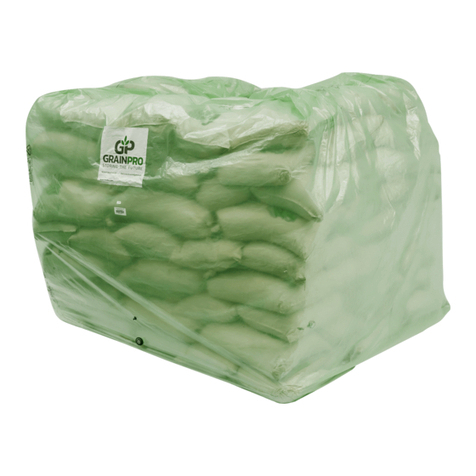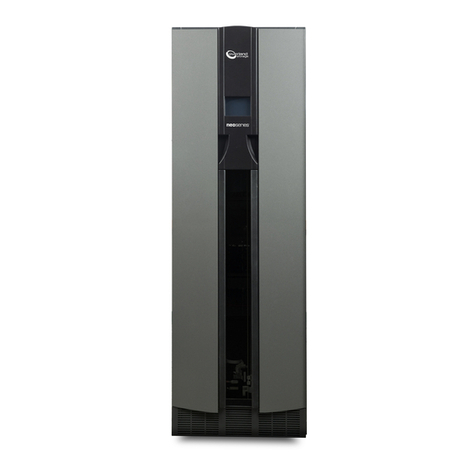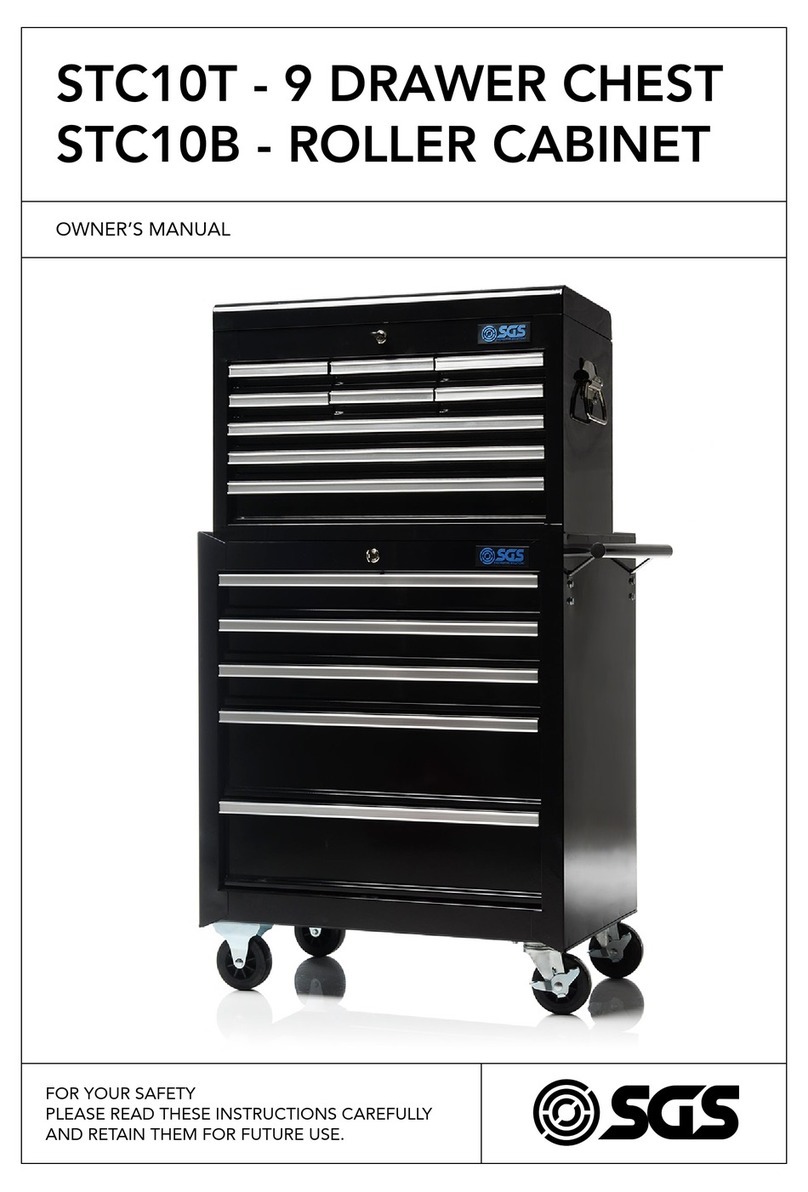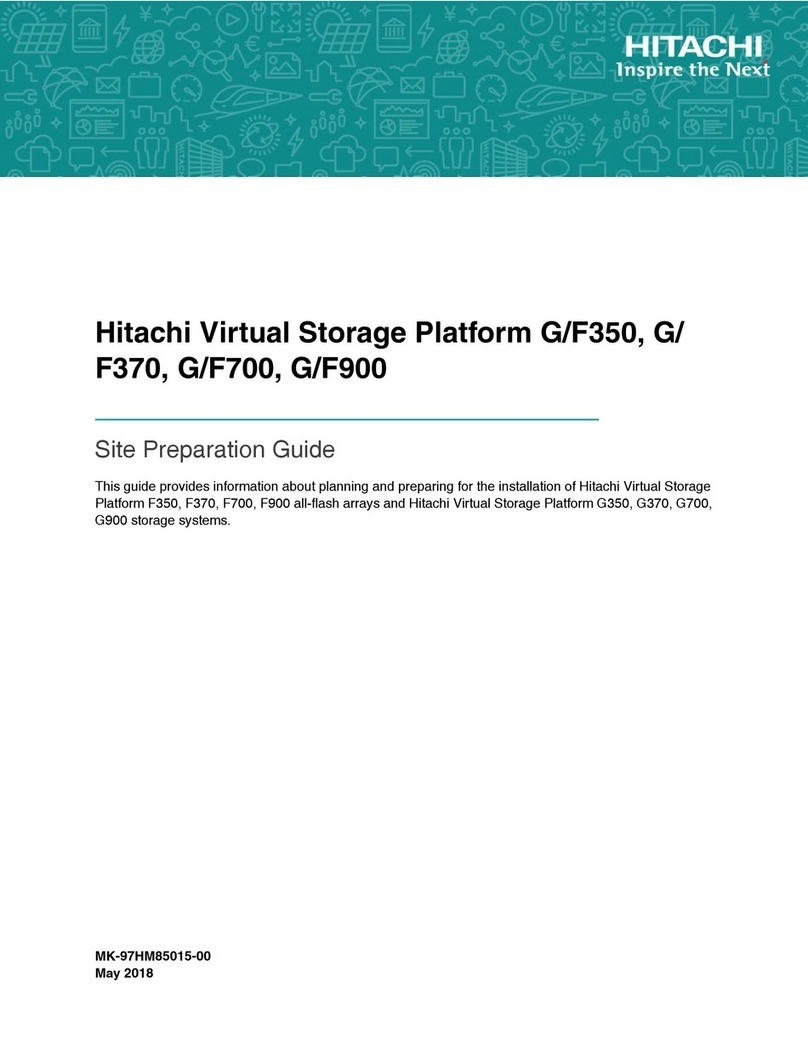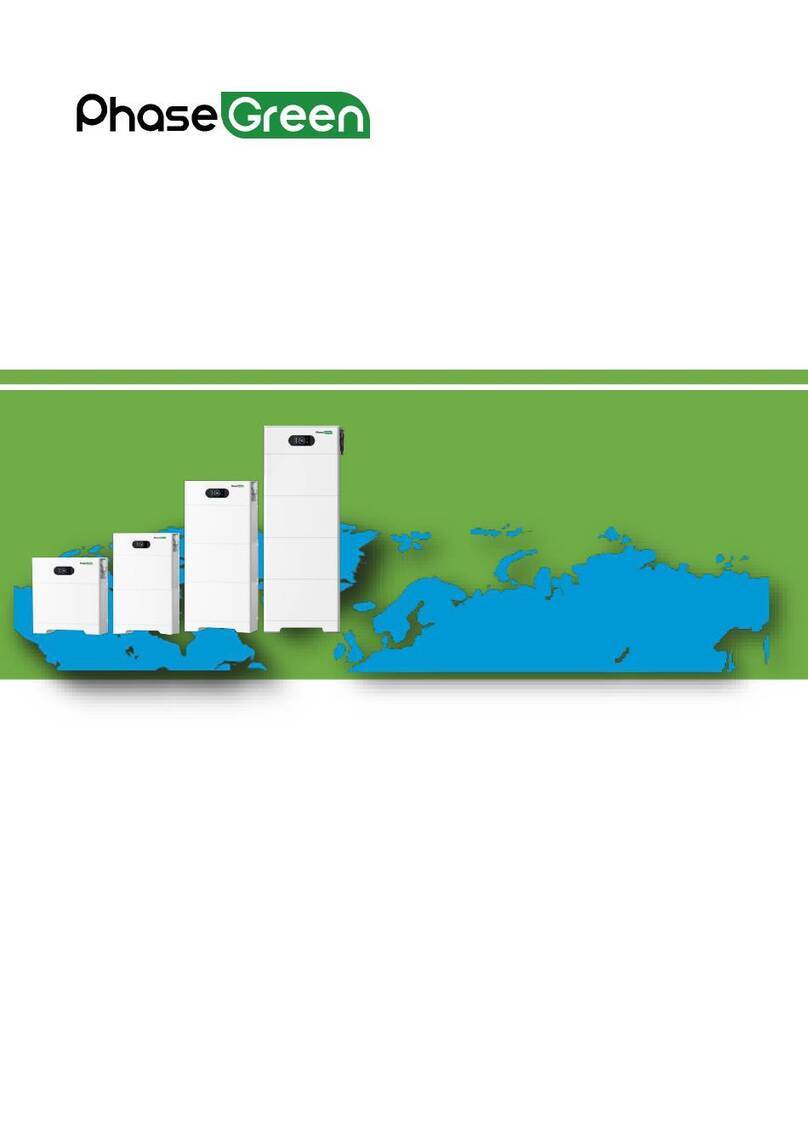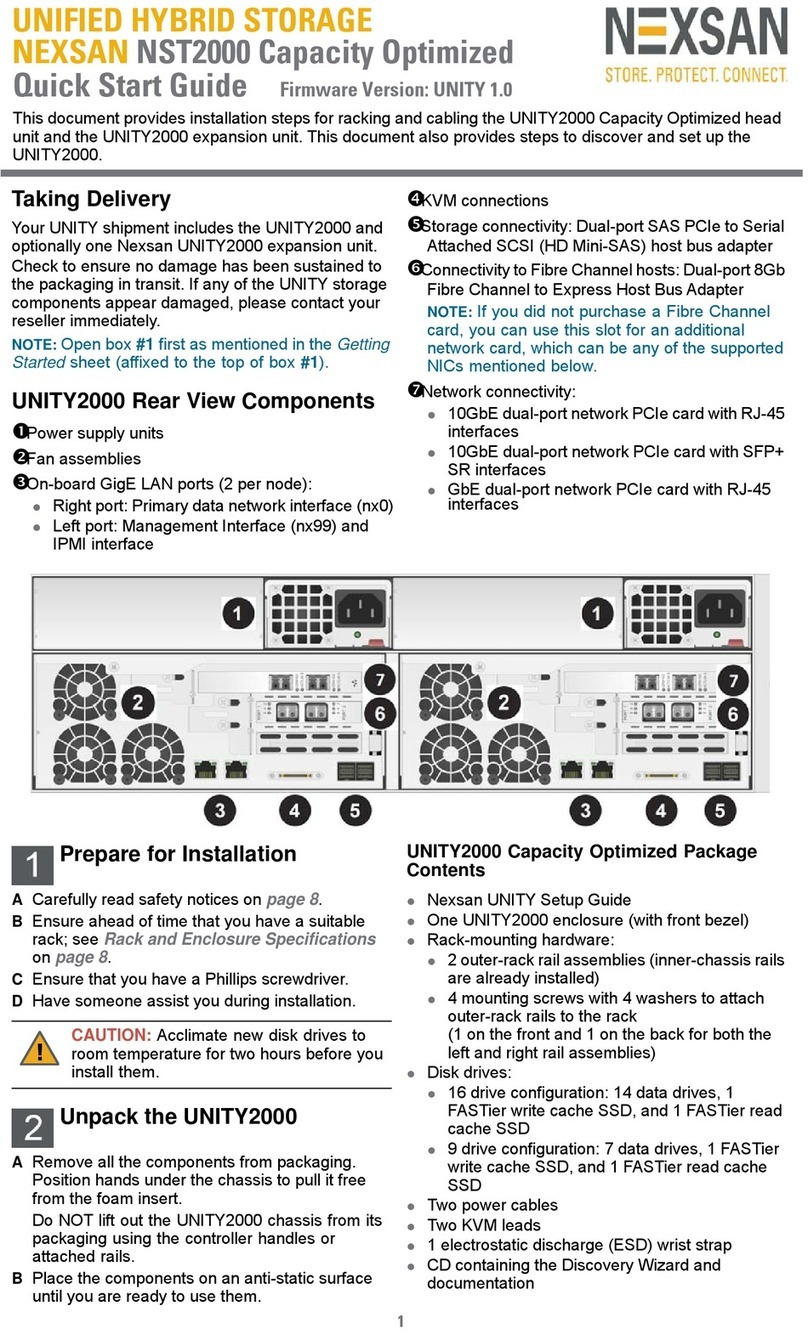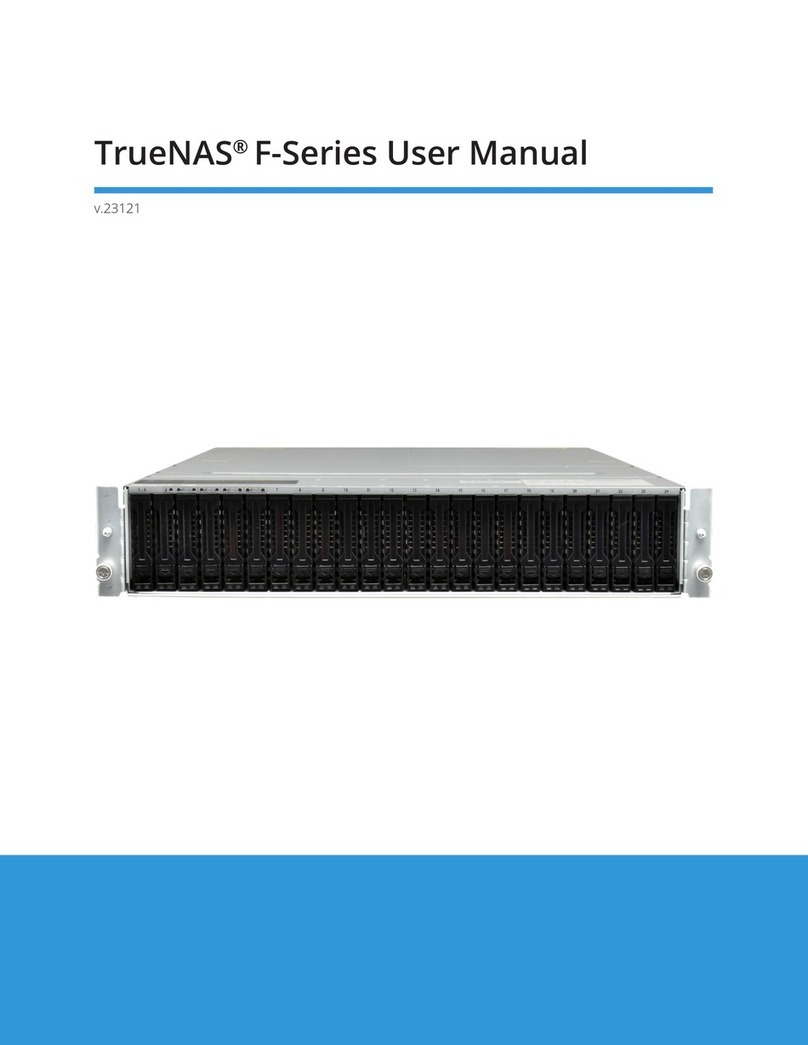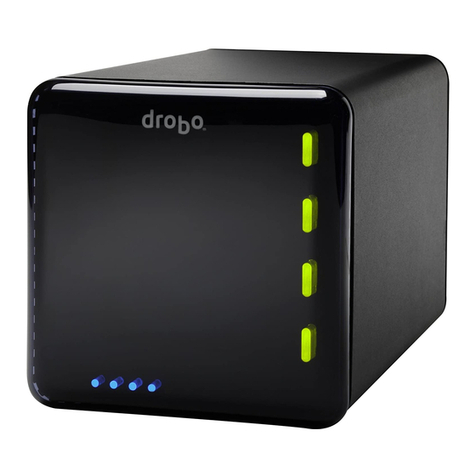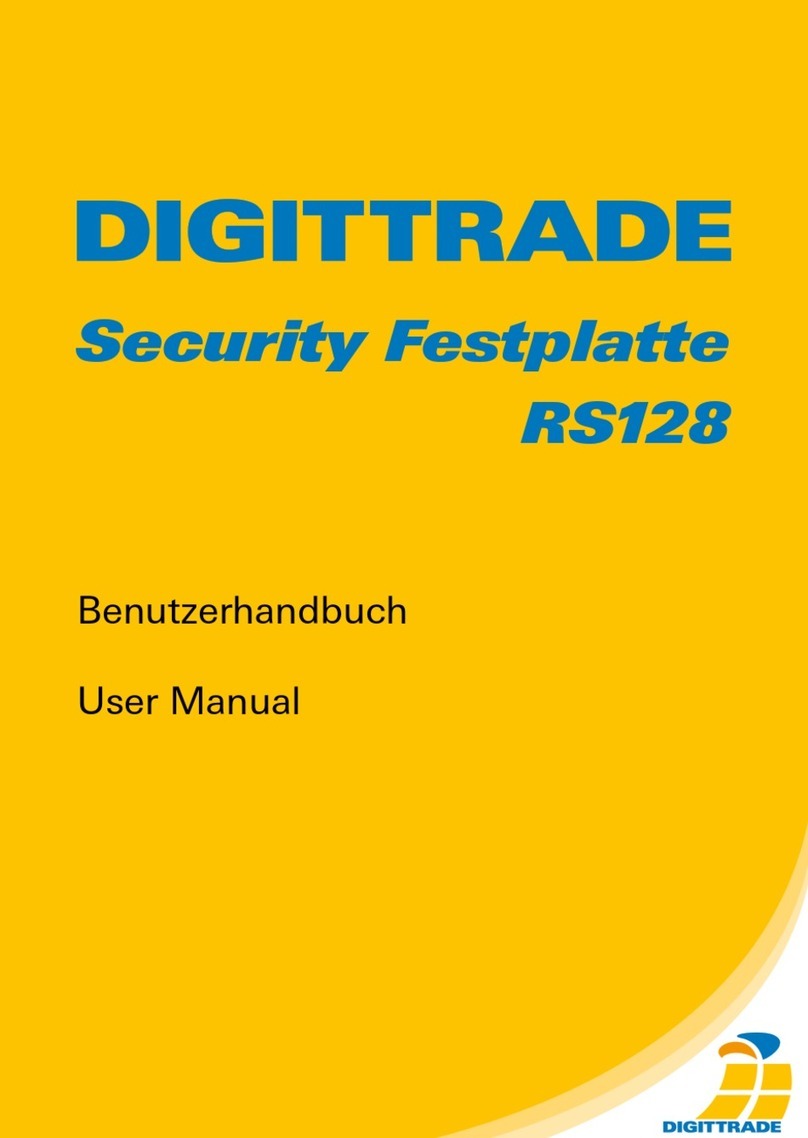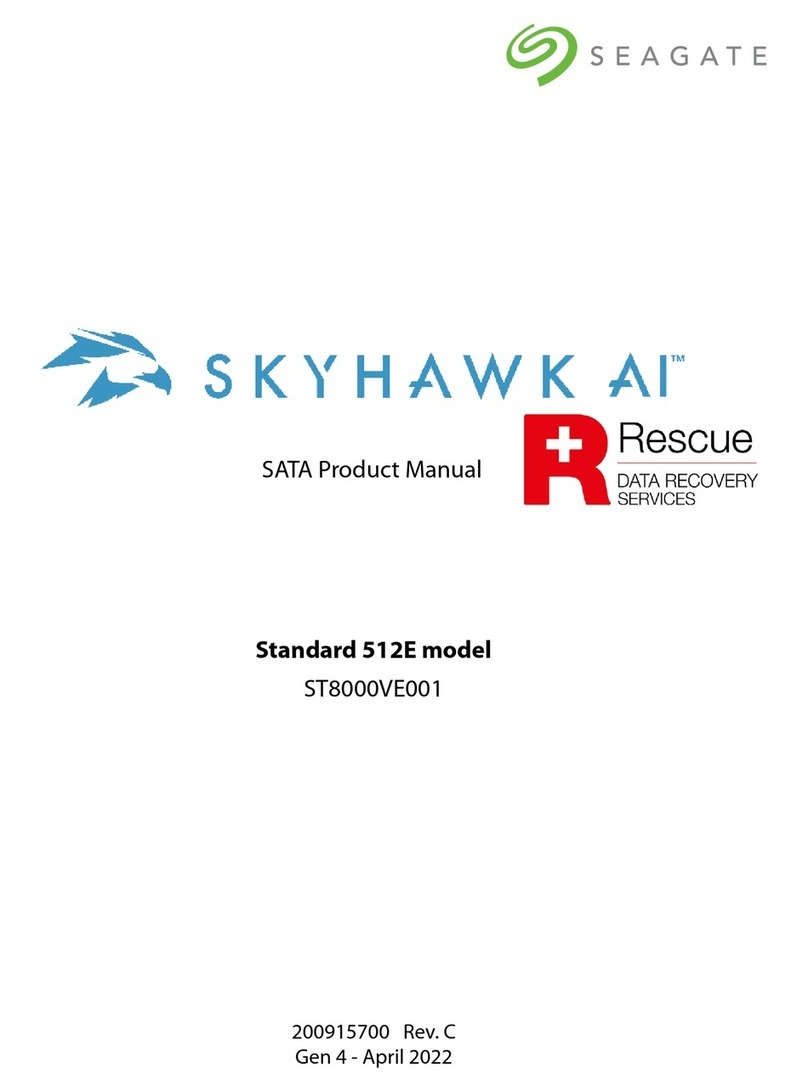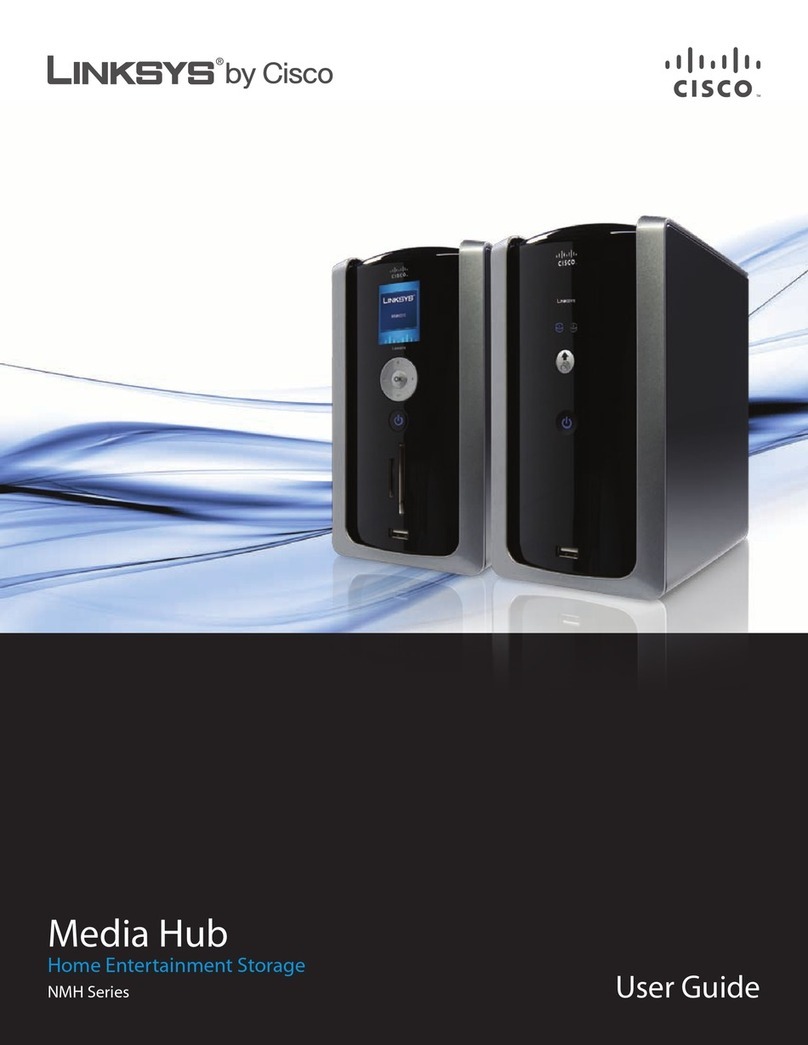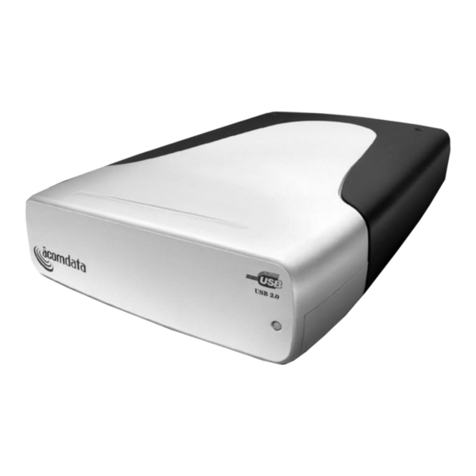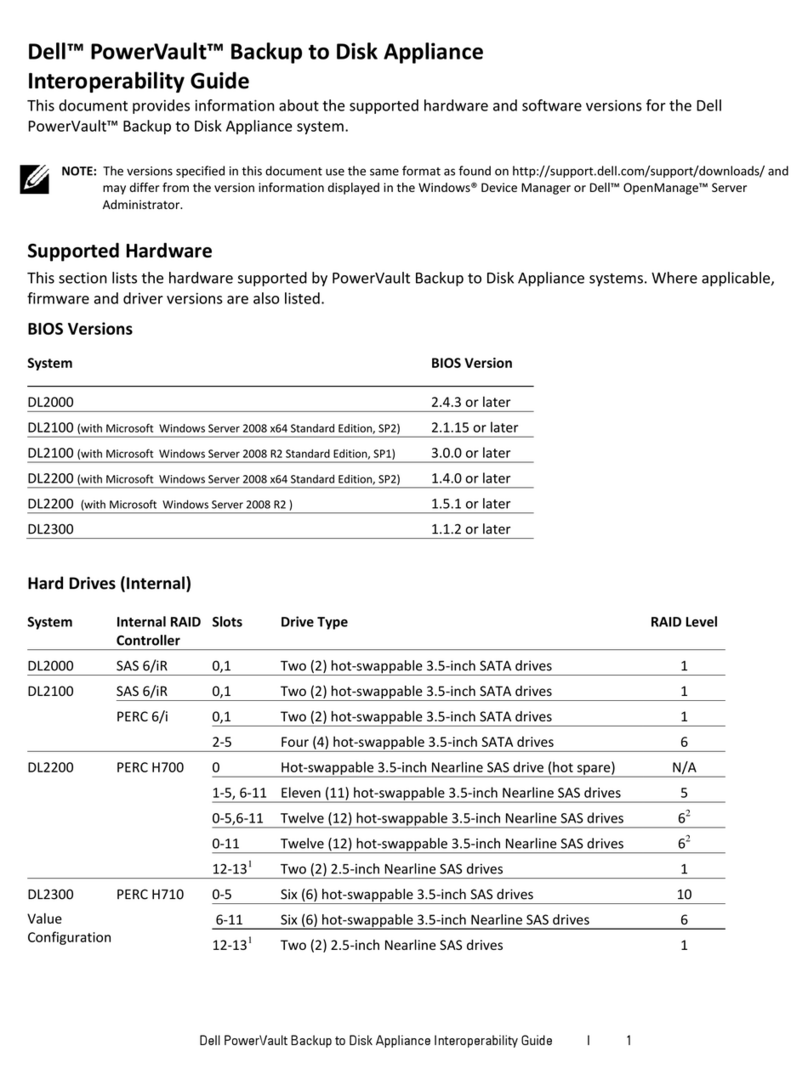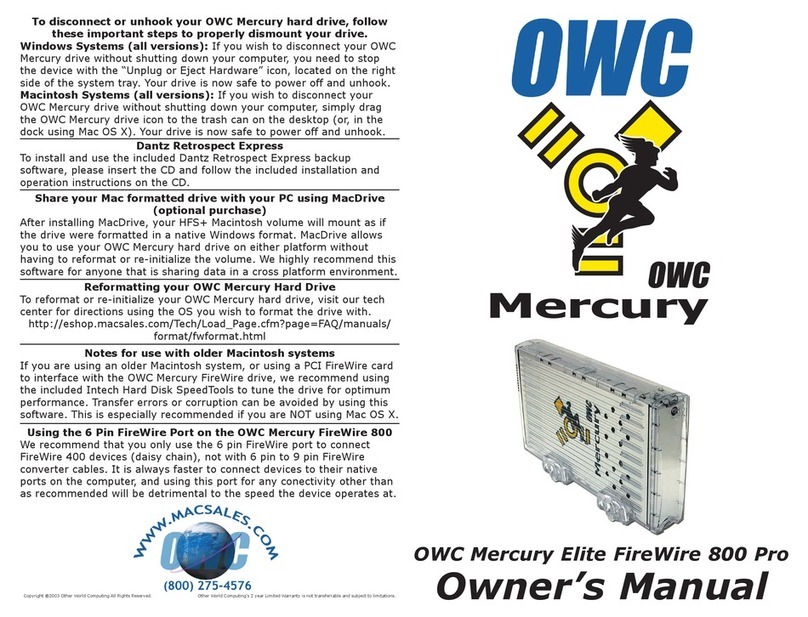GrainPro COCOON LITE User manual

GRAINPRO®COCOON™ LITE
INSTRUCTION MANUAL
MA4061RAD1117

2/21
GrainPro® Cocoon™ Lite Instruction Manual
MA4061RAD1117
GrainPro®, Inc.
200 Baker Ave., Suite 309 Concord, MA 01742 USA
Phone: +1 978 371 7118 Fax: +1 978 371 7411 Website: www.grainpro.com
Email: sales@grainpro.com
GrainPro®Philippines, Inc.
Lot 46 Efficiency Avenue, Subic Bay Gateway Park I, Subic Bay Freeport Zone 2222 Philippines
Phone: +63 47 252 7884 Fax: +63 47 252 7885 Website: www.grainpro.com
Email: salesasia@grainpro.com
GrainPro®Kenya
Shop A2, Space Apartments Mai Mahiu Road, Near T Mall Nairobi, KENYA
Phone: +254 710 933 717 Website: www.grainpro.com
Email: saleseafrica@grainpro.com
GrainPro®Mexico
Cto. Garona No. 903, Sección Tres, Col. Amberes, 37237, León, Gto. Mexico
Phone (Mobile): +52 1 (477) 392-0851 Website: www.grainpro.com
Email: guillerm[email protected]om
GrainPro®Costa Rica
Paseo Colón, Centro Colón, en Bufete Robles Oreamuno District Merced, San José, Costa Rica
Phone: +506 4701-1173 Website: www.grainpro.com
Email: chema@grainpro.com
GrainPro®India Postharvest Technology Pvt Ltd
B305, Grande View 7 Hsg. Soc. Ltd., Phase - I, Near Ashok Leyland, Ambegaon BK, PUNE,
Pune, Maharashtra, India, 411046
Phone (Mobile): +91 9970157263 Website: www.grainpro.com
Email: avinas[email protected]om

3/21
GrainPro® Cocoon™ Lite Instruction Manual
MA4061RAD1117
TABLE OF CONTENTS
1. INTRODUCTION....................................................................................................................................4
2. CHECKLIST............................................................................................................................................ 5
3. COMPONENTS......................................................................................................................................6
4. SPECIFICATIONS................................................................................................................................. 7
5. INSTALLATION...................................................................................................................................... 7
Site selection...................................................................................................................................... 7
Loading............................................................................................................................................... 8
Positioning the top section............................................................................................................... 9
Use of Desiccant (Calcium Chloride, CaCl2) - (Recommended)...............................................9
Zipping.................................................................................................................................................9
Pressure Decay testing (PDT)...................................................................................................... 11
Use of Security Tape - (Optional)................................................................................................. 12
Tensioning of straps....................................................................................................................... 12
Monitoring the oxygen level and Relative Humidity (RH%)......................................................13
Dismantling.......................................................................................................................................14
6. PREVENTING CONDENSATION.....................................................................................................14
Why does condensation occur?....................................................................................................14
Moisture content (MC) requirement for safe storage.................................................................14
Setting-up the GrainShade™........................................................................................................ 14
7. MAINTENANCE AND CARE............................................................................................................. 15
Regular examination.......................................................................................................................15
Physical inspection......................................................................................................................... 15
Repairing punctures and other damages.................................................................................... 16
Cleaning top and bottom sections................................................................................................ 16
Folding.............................................................................................................................................. 16
Safekeeping..................................................................................................................................... 17
Platform installation of rodent guard (RG)...................................................................................17
Termite control.................................................................................................................................18
Recycling.......................................................................................................................................... 19
8. FREQUENTLY ASKED QUESTIONS AND ANSWERS............................................................... 19
9. WARRANTY CLAUSE........................................................................................................................ 21

4/21
GrainPro® Cocoon™ Lite Instruction Manual
MA4061RAD1117
1. INTRODUCTION
The GrainPro®Cocoon™ Lite comes to improve the performance, handling and cost of the
previous generation of PVC Cocoons. It is made of a light-weight yet uniquely developed sturdy
laminated PE material for ease in handling. It has an extremely low Oxygen Transmission Rate
(OTR) and low Water Vapor Transmission Rate (WVTR) to improve storage performance and
it’s optimal UV Protection to make the Cocoon™ Lite applicable for outdoor installation.
Standard sizes of the Cocoon™ Lite are from 5 Metric Tons to 20 Metric Tons capacities. It may
also be used for Carbon Dioxide Fumigation by introducing CO2 gas into the side Inlet Port and
discharging the Oxygen on top by an Outlet Port. For a more confident storing, Relative Humidity
can be visually checked thru it’s transparent plug RH indicator, also a gas-sampling port for
monitoring the Oxygen Level inside the Cocoon™ Lite using the GrainPro®Oxygen Analyzer.
1.1. FEATURES:
1.1.1. Preserves grain quality for long period of storage.
1.1.2. Safe storage of commodities without using toxic and harmful fumigants.
1.1.3. The product can be stored at ambient temperature instead of alternative, energy consuming
cold storage method where low temperatures are required to prevent insect infestation and
biochemical deterioration.
1.1.4. Weather-resistant and UV-protected (can be used indoor or outdoor).
1.1.5. Mobile and easy to install, no need for any infrastructure.
1.1.6. No maintenance and operation cost.
1.1.7. “Green” product fits the demands of organic growers
1.1.8. Inhibits mold growth and aflatoxin production.
1.1.9. Controls insect infestation by depleting oxygen and increasing carbon dioxide in a gas tight
container.
1.1.10. Allows user to check oxygen and humidity levels.
1.1.11. A “green” technology for organic product storage.
1.2. PRODUCT GUARANTEE:
1.2.1. In accordance with the terms and conditions herewith, GrainPro®Inc. fully guarantees the
quality of this product provided that it is used according to the instructions stated in this manual.
1.2.2. Please read and understand the manual thoroughly before using the Cocoon™ Lite.
1.3. COMMENTS, COMPLAINTS, AND/OR CLARIFICATIONS:
1.3.2. We willing to answer your queries.

5/21
GrainPro® Cocoon™ Lite Instruction Manual
MA4061RAD1117
2. CHECKLIST
Please inspect your GrainPro®Cocoon™ Lite to ensure that the package includes the following
items:
PART NAME
DESCRIPTION
IMAGE
2.1. CARRY BAG
2.1.1. Contents:
a. Cocoon™ Lite
(Top and Bottom)
b. GrainShade™
c. Small parts
d. Instruction
manual
e. Repair Tape
2.2. ZIPPER PULL
2.2.1. For zipper sealing.
2.2.2. Two (2) pieces
2.3. REPAIR TAPE
2.3.1. Repairing and
patching of damages
(holes, tears)
2.3.2. One (1) piece
2.4. TAPE MEASURE
2.4.1. For checking height
of stack.
2.4.2. One (1) piece
2.5. GRAINSHADE™
2.5.1. For outdoor
installation.
2.5.2. One (1) piece

6/21
GrainPro® Cocoon™ Lite Instruction Manual
MA4061RAD1117
2.6. EXTRA ROPE
2.6.1. For tying the
GrainShade™.
2.6.2. Ten (10) meters long
(minimum length)
2.7. RODENT GUARD
2.7.1. For platform posts to
prevent rodent access
when storing the empty
Cocoon™ Lite.
2.7.2. Four (4) pieces per
pack
2.8 INSTRUCTION
MANUAL
2.8.1. Installation
instructions
2.8.2. Maintenance
instructions
2.8.3. Frequently asked
questions and answers
2.8.4. Warranty Clause
3. COMPONENTS

7/21
GrainPro® Cocoon™ Lite Instruction Manual
MA4061RAD1117
4. SPECIFICATIONS
4.1. MATERIALS
PARAMETERS
STANDARD
Material
Laminated PE
Color
White
Thickness, microns(inch)
300 (0.012)
Weight, g/m2
205
Oxygen Transmission Rate (OTR), cc/m2/day @
23± 0.5℃, RH= 0%
<1
Water Vapor Transmission Rate (WVTR),
g/m2/day
2
Sealing mechanism
PE Hermetic Zipper
4.2. PRODUCTS
Cocoon Lite
CAPACITY
(MT)*
LENGTH (A)
cm (inch)
WIDTH (B)
cm (inch)
HEIGHT (C)
cm (inch)
VOLUME
m3(ft3)
GP-CL -005
5
300 (118.11)
160 (62.99)
150 (59.06)
7.2 (254.27)
GP-CL -010
10
338 (133.07)
294 (115.75)
150 (59.06)
14.91 (526.54)
GP-CL - 020
20
450 (177.17)
330 (129.92)
200 (78.74)
29.70 (1048.85)
*Based on the density of wheat
5. INSTALLATION
5.1. SITE SELECTION
5.1.1. In selecting a site, look for:
a. Cocoon™ Lite is designed for both
indoor
and outdoor installations.
b. A smooth area away from standing or
running water.
c. Ensure that the site is protected from
stray animals and from theft.
d. Shade (otherwise under a
GrainShade™) to minimize temperature
differences.
5.1.2. Prepare the selected site by clearing away all sharp objects (stones, broken glass, nails,
etc.) that may puncture the Cocoon Lite™. Sufficient space to accommodate the Cocoon™
Lite and an inspection path around (at least 50 cm each side).
5.1.3. If ground will be used as flooring, put a
layer (5cm) of fine sand (or any
equivalent) on top of the soil as ground
foundation.
5.1.4. During loading, make sure that workers do not wear shoes with spikes that may damage the
Cocoon™ Lite. Preferably, choose a site that offers ease in loading/unloading, away from
crowded areas and rubbish. For indoor installation, clean the area to remove sharp objects.

8/21
GrainPro® Cocoon™ Lite Instruction Manual
MA4061RAD1117
5.2. LOADING
5.2.1. Check the moisture content of the
commodity to ensure the MC is at a safe
level.
5.2.2. Loading the bottom section:
a. Unfold the bottom section of the
Cocoon™ Lite and lay it out on the
prepared site.
b. Start piling the sacks on the bottom
section.
c. Put down the first four bags on every
corner of the Cocoon™ Lite (one for
each corner).
d. Make sure that the bottom section is
stretched by pulling the corners with
the bags. Stretching will reduce the
risk of rodent damage.
5.2.3. Required stack height:
a. Load the first layer of sacks in one
direction.
b. Continue adding layers in an inter
locking manner (criss-cross), i.e. one
layer on the top of the previous layer.
c. Stack sacks to the corresponding
heights.
5.2.4. Mechanical loading of bagged commodity, optional for big sizes of Cocoon™ Lite:
a. Stacking of grains involves diverse operations such as conveyor, forklift or crane.
b. Operations provide continuous stacking without delays especially for outdoor installation.
Conveyor
Forklift
Crane
5.2.5 The top layer:
a. Continue piling the sacks until the desired
Cocoon™ Lite height is reached.
b. Once you have reached the required
stacking height, provide one line of sacks in
the middle along the longitude of the stack.
c. This creates a crest that will keep rainwater
from accumulating on the top of the
Cocoon™ Lite.

9/21
GrainPro® Cocoon™ Lite Instruction Manual
MA4061RAD1117
5.3. POSITIONING THE TOP SECTION
5.3.1. There are several ways to place the top section:
a. By the rolling.
b. Using a mechanical aid (forklift and conveyor).
Rolling method
Use of forklift
Use of conveyor
5.3.2. Unfold the top section over the stack, and be sure that the top and bottom section arrows
meet and make sure the tension straps are on the outside.
5.3.3. Pull the sides all the way down over the stack.
5.3.4. Do not pull or carry the top section by the tension straps.
5.4. USE OF DESICCANT (CALCIUM CHLORIDE, CaCl2) - (RECOMMENDED))
Note: Desiccant (Calcium Chloride, CaCl2) is not included in the package.
5.4.1. Required dosage of Calcium Chloride, CalCl2.
5.4.2. Place the packed desiccant (Calcium Chloride, CaCl2), at the middle-top portion of the
bags inside the Cocoon™ Lite before Zipping.
5.4.3. If six (6) months of storage, spread-out the packed desiccant (Calcium Chloride, CaCl2) at
the top portion of the bags inside the Cocoon™ Lite before Zipping.
COCOON LITE
CAPACITY
Desiccant Required (CaCl2)
for one (1) month of storage
Desiccant Required (CaCl2) for
Six (6) months. of Storage
(MT)
grams
grams
GP-CL -005
5
50
300
GP-CL -010
10
100
600
GP-CL -020
20
200
1200
5.5. ZIPPING
5.5.1. Preparing to zip:
a. Insert one hand inside the inverted
pocket.
b. Manually close the zipper track to a
length of at least 30cm before using
the zipper slider.

10/21
GrainPro® Cocoon™ Lite Instruction Manual
MA4061RAD1117
5.5.2. Engaging the zipper slider:
a. Insert the lower section of the zipper
(attached to bottom section of
Cocoon™ Lite) to the zipper slider
first.
b. Insert the top section of the zipper
(attached to the top section) to the zipper
slider. Make sure that the two zipper
sections are aligned and are overlapping
each other.
c. Move the zipper slider towards the
engaged zipper section until the zipper
slider is completely aligned/locked with
the engaged zipper section.
5.5.3. Using the zipper slider:
a. After engaging the zipper slider, pull
the zipper to start the zipping/closing
process.
b. To make zipping easier, a second
person should pull the top and bottom
liners’ zipper tracks close to each other
which will serve as guide while the
zipper pull advances.

11/21
GrainPro® Cocoon™ Lite Instruction Manual
MA4061RAD1117
5.5.4. Completing the zipping process:
a. As you go around the Cocoon™ Lite,
take note of the marks (“arrows”)
printed on both top and bottom
sections in pairs. The markings at the
top section are located just a few
centimeters above the zipper.
5.5.5. Removing the zipper pull:
a. When you have zipped Cocoon™ Lite
sides and reached the inverted pocket,
take the zipper slider off the track by
disengaging first the lower section from
the slider and then disengage the
zipper slider from the bottom zipper
section.
b. Close the last few centimeters of the
zipper track by sliding the fingers into
the inverted pocket and close the
zipper manually by pressing the
zippers against each other.
5.5.6. Ensuring a complete hermetic closure:
a. Check to ensure the entire length of
the zipper track is fully closed.
b. If not, press the zipper halves
together by hand.
NOTE:
Dirt or other objects on the zipper
track can prevent it from closing
completely. So it’s important to
clean the zipper tracks before
closing/zipping.
5.6. PRESSURE DECAY TEST (PDT)
5.6.1. After completely zipping and closing all
the ports of the Cocoon™ Lite, perform
a Pressure {Vacuum} Decay Test (PDT)
to ensure gas-tightness:
a. Use a digital manometer.
5.6.2. Either, a commercially available or
improvised U-tube manometer can be
used to monitor the pressure.

12/21
GrainPro® Cocoon™ Lite Instruction Manual
MA4061RAD1117
5.6.3. Connect the manometer hose into the
flexible inlet (gas sampling port) of the
Cocoon lite.
5.6.4. Use a vacuum pump [at least 2.3 cubic
meters per minute with 600 Watts (0.80
horsepower) centrifugal pump]:
a. Connect the vacuum pump hose to the
inlet port of the Cocoon™ lite.
b. Create at least -250 Pascals (Pa) or -
25 millimeters’ water (mm H2O) vacuum.
Doing this can also help engage the
zipper tracks properly as there may be
imperfections during zipping.
a. For it to be considered sufficiently airtight, the final pressure should not be greater than
one-half (½) of the initial pressure (created by the vacuum pump) within five (5) minutes.
b. If the PDT test failed, check for holes/tears and poorly sealed zippers then repeat the
PDT procedures.
5.7. TENSIONING OF STRAPS
5.7.1. Pull the protective flap down over the
zipper track. Tighten the straps to pull any
slack on the sidewall up away from the
ground. Check that the protective flap
over the zipper track is not displaced.
5.7.2. The tension straps are long enough to
raise and apply tension to the sides of the
Cocoon™ Lite, even if it is only three-
quarters full. The required tension can be
achieved by attaching the cords to the
buckles of the Cocoon™ Lite.

13/21
GrainPro® Cocoon™ Lite Instruction Manual
MA4061RAD1117
5.8. MONITORING THE OXYGEN LEVEL AND RELATIVE HUMIDITY (RH%)
5.8.1. Use of an oxygen analyzer:
a. During the first 15 days of installation,
oxygen level should be checked daily
using the oxygen analyzer.
b. Succeeding monitoring should be done
twice a week. Normally, oxygen levels
should drop 1-2% per day to a level less
than 3% (though lower levels have been
observed as well). Oxygen levels go up
by a few percent but must not exceed
7%. Except for coffee beans and seeds,
in this situation, sealing is probably
compromised and the commodity may not
be adequately protected.
5.8.2. Use of humidity indicator:
a. The humidity indicator is a special circular paper with moisture-sensitive chemical. Its
color changes from blue to pink when relative humidity exceeds 65%, and vice versa.
b. The humidity indicator provides an affordable and quick reference to relative humidity
inside the Cocoon™ Lite.
c. It is easy to use and does not require meticulous preparation for installation.
d. The material is non-toxic and disposal doesn’t need any special treatment.
e. Procedures on how to use the humidity indicator:
Get a humidity indicator from the pack
Put the humidity indicator inside the
transparent plug using the clip
Attach the transparent plug to the
threaded flange tightly
Hide the humidity indicator with the
zipper cover
5.8.3. Instruction when Indicator turned Pink:
a. Replace the pink indicator with an unused (blue) indicator. Make sure the plug is dry and the
replacement is done quickly (Cover threaded flange to not let in too much air inside).
b. Monitor the indicator for 4-8 hours.
c. If the indicator turned pink within 4-8 hours, use other devices to check for the humidity inside or
consult GrainPro®.
d. If the indicator did not turn pink, continue to monitor. Repeat procedure if the indicator changes.
Note:
Place unused Humidity indicators on a sealed container with the included desiccant.
Humidity indicator cards with pink or lavender spots can be turned to a blue color by placing
indicators in a sealed container with 33grams (I unit) of desiccant for 4-8 hours or oven dry for
10-20minutes, set the oven to 50°C (122°F).

14/21
GrainPro® Cocoon™ Lite Instruction Manual
MA4061RAD1117
5.9. DISMANTLING
5.9.1. Although CO2is not toxic, it is an asphyxiant and is advisable to unzip the Cocoon™ Lite
and wait until most of the CO2has dispersed.
5.9.2. Although the Cocoon™ Lite may be progressively filled over several days as the
commodity is harvested and provided they have the same moisture content, it is not
recommended to top-up a Cocoon™ Lite that is still partially filled from a previous harvest,
with commodity brought in from the new harvest. This is because when the new commodity
is tapped from top, the old commodity from the previous harvest is left at the bottom.
5.9.3. This commodity will only be unloaded at the end of storage:
a. Unfastening the tension straps.
b. Using a coin, insert and twist the zipper (sharp objects should not be used for opening the
zipper).
c. Gently pull the two sections apart, taking the top section completely off.
d. Remove the sacks of stored commodities (again, a stairway of sacks might make the job
easier).
6. PREVENTING CONDENSATION
6.1 WHY DOES CONDENSATION OCCUR?
6.1.1. Condensation is caused by temperature difference i.e. hot weather by day and cool at night
or sudden rains in a hot sunny day. When air collides with a cool surface at dew point
temperature the water in the air condenses on the surface. Air movement inside the
Cocoon™ Lite follow the natural forces i.e. in convection currents hot air rise and cool air
sinks (except for the phenomenon called inversion). Hence, when warm air inside the Cocoon
Lite™ rise and hit the cool Cocoon™ Lite top cover at dew point temperature, condensation
reaction occurs and water condenses.
6.1.2. Therefore, avoiding trapped warm air inside the Cocoon™ Lite can prevent condensation at
the top layer. This is the role of the GrainShade™ i.e. Prevents heating up the air inside the
Cocoon™ Lite by repelling solar radiation. Condensation can be checked manually through
the Inspection port. Close the inspection port properly after checking.
6.2 MOISTURE CONTENT (MC) REQUIREMENT FOR SAFE STORAGE
6.2.1. Commodities should be dried before storage to at least 12% MC for sorghum, 9-10% millet,
12-14% for paddy and maize, and 13% for wheat.
6.2.2. When the commodity is properly dried, there is virtually no “free water” that the micro
organisms can use to process the nutrients in the stored product for their growth and
development.
6.2.3. This condition can be maintained by avoiding ambient air (with variable moisture content) to
be in contact with the dried product using the hermetic storage technology.
6.3 SETTING-UP THE GRAINSHADE (OUTDOOR INSTALLATION)
6.3.1. Ensure that the poles are rigid and stable:
a. Use poles (pipe, lumber, or bamboo) at
least 1.5 meters away from each corner
and 1.0 meter higher than the Cocoon™
Lite.
b. Connect the corners of the GrainShade to
apex of the poles, maintaining at least 1-
meter clearance between the top surface
of the Cocoon™ Lite and the
GrainShade™.
c. Additional wires to reinforce the pole by tying at the top with the other end pegged to the
ground away from the pole.
6.3.2. If poles are not feasible, tie the GrainShade™ to nearby posts, walls, tree branches, or pegs
for support.
6.3.3. To prevent from sagging and flapping during rain and strong wind, install a wire or rope
beneath and above the GrainShade™.

15/21
GrainPro® Cocoon™ Lite Instruction Manual
MA4061RAD1117
7. MAINTENANCE AND CARE
7.1. REGULAR EXAMINATION
7.1.1. Measure oxygen concentration using
Oxygen analyzer (GrainPro®Hand Held
or ICA model).
a. First-two weeks- Daily.
b. Succeeding days- Twice a week.
7.1.2. Check (at least weekly) possible
condensation by opening (and re-
closing) the checking port.
7.2. PHYSICAL INSPECTION
7.2.1. Check the zipper track for any small
opening/s and push the opened track
section by hand.
7.2.2. No slack material should be developed
near the ground.
7.2.3. If slacks are observed, re-adjust the
tension straps to pull up any slack side
wall away from the ground.

16/21
GrainPro® Cocoon™ Lite Instruction Manual
MA4061RAD1117
7.2.4. During rainy season, the upper surface of
the Cocoon™ Lite should be regularly
inspected for water accumulation and
damages that would permit water to sip
into the Cocoon Lite™. The stored
commodity is not adequately protected if
the Cocoon™ Lite is not completely
sealed.
7.2.5. Re-tensioning of wires to prevent from
sagging and flapping during rain and
strong wind.
7.3. REPAIRING PUNCTURES AND OTHER DAMAGES
7.3.1. Repair procedures:
a. Use the repair tape found in the
repair kit to patch the damaged section.
b. Clean the surface of the damaged area
with damp cloth and allow to dry before
applying the repair tape.
c. Cut-out a piece large enough to cover
the damaged section to be applied at
the outside surface of the Cocoon™
Lite.
d. Manually press the patching tape
against the damaged area.
7.3.2. Protective maintenance:
a. Check the patched repair tape
occasionally and replace or re-patch if
necessary.
7.4. CLEANING TOP AND BOTTOM SECTIONS
7.4.1. If necessary, clean with soap and water.
7.4.2. Dry under the sun.
7.5 FOLDING
7.5.1. Measure 180cm from the end and fold inside.
7.5.2. Fold any extra material and finally fold in half.
7.5.3. Fold the material lengthwise until it fits in the carrying bag.
7.5.4. Folding procedures and repacking of the Cocoon™ Lite:

17/21
GrainPro® Cocoon™ Lite Instruction Manual
MA4061RAD1117
A
B
C
D
E
F
7.6 SAFEKEEPING
7.6.1. The empty Cocoon™ Lite should be
stored away from heat or direct sunlight
and away from rodent.
7.6.2. Do not place heavy object on top of the
stored liner as it may damage or deform it.
7.7 PLATFORM INSTALLATION OF RODENT GUARD (RG)
7.7.1 For protection against rodent attacks (one
set contains 4 pieces of rodent guard):
a. One set can be installed on any
platform legs with leg perimeter
(round or square) of 22 cm (9'') to 44
cm (17'').
b. If the leg area is smaller, the rodent
guard can be optionally cut in half to
fit. Cut along the lines at the back of
the rodent guard.
7.7.2 Fold the rodent guard's teeth upwards
against the sides of the leg to keep it
from slipping.

18/21
GrainPro® Cocoon™ Lite Instruction Manual
MA4061RAD1117
7.7.3 Make sure to overlap the sides at least
one inch.
7.7.4 Lock the overlap using staple wire, cable
wire, or any fastener.
7.8 TERMITE CONTROL
7.8.1 Overview of Termite.
a. The two most common types of termites
are "dry wood" and "ground," or
subterranean termites.
b. Termites need moisture to survive and
will die if exposed to sunlight or open
air for more than a few minutes. Their
tunnels protect them from the elements.
c. High moisture areas like basements and crawl spaces are very attractive to termites and
can serve as starting points for an infestation.
7.8.2 Description (Subterranean Termite).
a. Food and moisture:
Need a great deal of moisture such as from soil, and damp wood, Cellulose (from
wood) is their diet.
b. Habitat:
Usually they live in the soil, but can be above ground if enough moisture is present.
They have large colonies.
c. Evidence of activity:
Protective mud tubes ascending from the ground to the structure or protruding from
walls, etc.
d. Prevention:
Treat the soil before construction - pretreatment with termiticide.
For more information go to Chemical soil treatment.
A termite bait station monitoring system to monitor termite activity and bait placements
after detection.
Regular inspections.
e. Control Measures:
With current activity use a baiting program or a termite barrier treatment.
7.8.3 Termite Treatments.
a. The traditional method of controlling subterranean termites was to apply a liquid pesticide,
known as a termiticide, to the soil. This chemical treatment relied on the application of a
chemical barrier around and beneath the structure designed to block all possible routes of
termite entry. Any termites attempting to penetrate through the treated soil were either
killed or repelled.
b. There are several different insecticides currently used by pest control operators for
termite soil treatments. All of them are safe and effective when used per label directions.
The insecticides remain effective in the soil for approximately 5 to 10 years.
c. Effective termite treatments require a great volume of termiticide.

19/21
GrainPro® Cocoon™ Lite Instruction Manual
MA4061RAD1117
7.9 RECYCLING
GrainPro®Cocoon™ Lite is made of PE.
7.9.1. The products can be delivered to the nearest recycling facilities in the area.
7.9.2. Plastic #4 – Low Density Polyethylene can be recycled into compost bins, panneling, trash
can liners and cans, floor tiles, and shipping envelopes.
8. FREQUENTLY ASKED QUESTIONS AND ANSWERS
8.1. SHOULD I PUMP THE AIR OUT OF THE COCOONTM LITE?
If used as simple Cocoon™ Lite, do not pump out or modify the air inside. The insects own
natural activity (respiration) will use up the available oxygen and convert them to carbon
dioxide (CO2).
8.2. SHOULD I FUMIGATE INFESTED FOOD BEFORE STORAGE?
No, you do not need to fumigate to get rid of the infestation. The insects will die in a
matter of days due to lack of oxygen.
8.3. IS THERE ANY USE NOT RECOMMENDED FOR COCOONTM LITE?
Yes, the Cocoon™ Lite is not recommended for storing fresh fruits, vegetables, medicine,
or insufficiently dried commodities.
8.4. CAN YOU ADD OR TAKE OUT ITEMS ONCE THE COCOONTM LITEIS FILLED AND CLOSED?
Yes, you can take out or add items. If the added items are infested, the insects will
naturally die when oxygen is used up. However, it is not recommended to frequently open
the Cocoon™ Lite. The GrainSafe Bag-1.0TM with a 1-ton capacity can be used instead.
8.5. DO I NEED TO FILL COCOONTM LITE ENTIRELY FOR IT TO BE HERMETIC?
No. However, at least a three-quarter load is recommended to ensure a good hermetic
effect and full protection from insect infestations and rodents.
8.6. SHOULD THE COCOONTM LITE BE INSTALLED ONLY INDOORS?
No. The Cocoon™ Lite is designed for indoor and outdoor use also under all climatic
conditions.
8.7. WILL A PUNCTURE NEGATE THE BENEFITS OF HERMETIC STORAGE IN THE COCOONTM
LITE?
Not completely, although a puncture allows oxygen to maintain an infestation in the
immediate area of the punctured hole. Tight bag stacking of the stored product tends to
prevent widespread infestation. Immediate repair of all punctures or cuts is highly
recommended.
8.8. WHAT IS THE SAFE PRODUCT MOISTURE CONTENT FOR STORAGE IN COCOONTM LITE?
The Cocoon™ Lite works best with grains at or below the equilibrium moisture content
which varies with locations and weather conditions. Equilibrium moisture content is affected
by temperature and relative humidity.
8.9. CAN RODENTS BITE THROUGH THE PE MATERIAL OF AN INSTALLED COCOONTM LITE?
Yes, but only if the sides are sagging (not stretched firmly). Rodents penetrate the smooth,
slippery surface of a Cocoon™ Lite if the sides have too little tension. Rodents can also
damage the top cover by jumping down from an overhang such as a low hanging branch of
a tree. In areas with heavy soils and high rodent activity, it is recommended that the
Cocoon™ Lite be placed on a 5-centimeter-thick layer of sand. But concrete or paved
flooring is best. WARNING: Be sure to protect the empty Cocoon™ Lite in its carry bag
during storage. Rodents can damage Cocoon™ Lite when they are empty and left
unprotected.

20/21
GrainPro® Cocoon™ Lite Instruction Manual
MA4061RAD1117
8.10 CAN COCOONTM LITE BE USED TO STORE AGRICULTURAL COMMODITIES OTHER THAN
GRAINS?
Yes, most dry agricultural commodities such as seeds, pulses, beans, coffee, cocoa,
some dried fruits, and even dried chilies can be safely stored. When in doubt, ask GrainPro®.
8.11. HOW FAST WILL OXYGEN LEVEL DROP AFTER SEALING?
Normally, if the stored commodity is sufficiently dried and heavily infested, except for
coffee, oxygen can drop down to 1-2% in 14 days. The drop depends on infestation level,
moisture content of the product, and other factors. If the oxygen level does not drop in a
span of 7 days, check for open zipper track; inspect the top and bottom sections for holes
and cuts. Contact GrainPro®for assistance immediately.
8.12. WHAT SHOULD BE DONE WHEN IT IS DIFFICULT TO TAKE AN OXYGEN READING?
First, check the flexible inlet valve and see if it is clogged or dirty. Clean the inlet to
remove dirt and other impurities. Slightly flex the end of the flexible inlet valve to create an
opening for air to pass through. When inserting the oxygen analyzer tube, slightly pinch the
flexible inlet to get a proper reading. Refer to the Oxygen Analyzer Manual for further
information.
8.13. IS IT SAFE FOR THE HUMIDITY INDICATOR TO COME IN CONTACT WITH FOOD?
The GrainPro®humidity indicators are non-toxic.
8.14. SHOULD I REPLACE THE HUMIDITY INDICATORS IF THEY CHANGE COLOR?
Yes. If the humidity indicator turned pink replace with an unused (blue) indicator. Please refer
to 5.8.3. (Instruction when indicator turned pink) for step by step instruction.
8.15. HOW LONG WILL IT TAKE FOR THE HUMIDITY INDICATOR TO CHANGE COLOR?
Normally, the indicators will change color within minutes of exposure to the ambient
conditions. However, the time it takes for the humidity indicator to turn from one color to
another depends on the amount of humidity the indicator is exposed to and the temperature.
Other manuals for COCOON LITE
1
Table of contents
Other GrainPro Storage manuals
